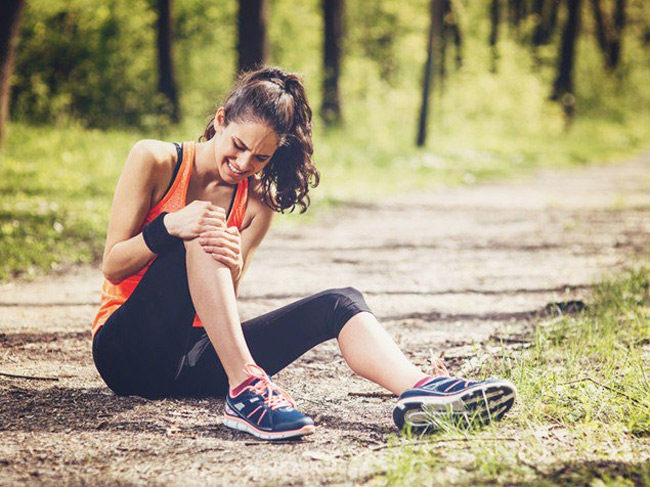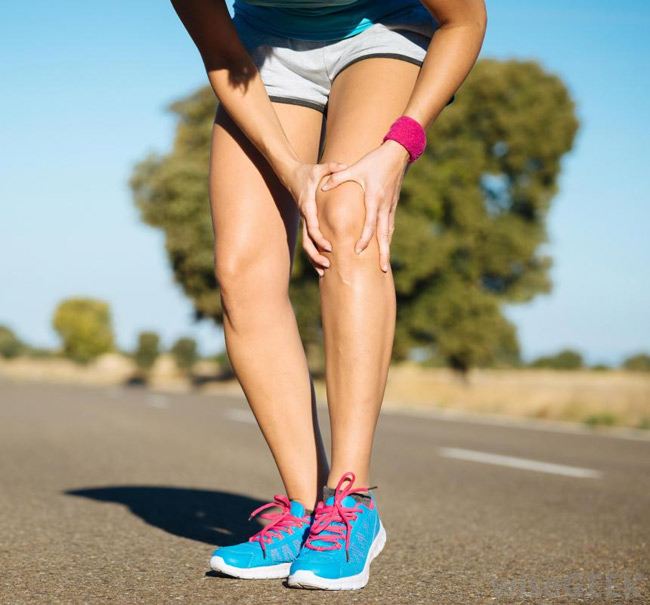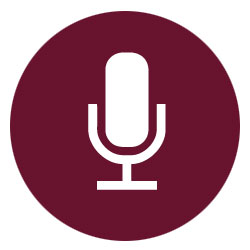How To Beat Runner's Knee

Runner's knee is an overuse rather than a traumatic injury.
Any activity that repeatedly stresses the knee joint, including walking, skiing, biking, jumping, cycling, and playing soccer can at some time cause Runner's knee. This condition includes: anterior knee pain syndrome, patellofemoral malalignment, chondromalacia patella, and iliotibial band syndrome.
Why it Occurs?
There are some common risk factors that can affect how the patella tracks.
- The resting position of the patella: some people are predisposed to problems because of the position of their patella. It may sit too far to the outside of the groove, or be tilted or rotated, which may increase contact within the groove.
- The muscles around the knee: namely the quadriceps or thigh muscles. If the inside quads muscle does not activate well it can cause tracking issues, and people with patellofemoral pain tend to develop weaker quads. If the iliotibial (IT) band, which runs down the outside of the thigh, is tight, it can pull the knee cap more towards the outside of the knee.
- Hip and pelvis control: if your pelvis drops on the opposite side as you bend your knee this can cause strain through the knee and affect the angle of pull through the muscles, causing tracking issues. A simple way to test how you move is to do a single leg squat in front of the mirror; if your belt line drops down as you bend and your knee does not move over your foot then you do not have optimal mechanics.
- Foot position: if your feet roll in a lot then your knee will have a tendency to twist in and this can cause tracking issues as well.

Symptoms
A persistent dull, aching pain around or behind the kneecap, or
patella, especially where it meets the lower part of the thighbone
or femur is the most common symptom of Runners knee.
You may feel pain when:
- walking
- climbing or descending stairs
- squatting
- kneeling
- running
- sitting down or standing up
- sitting for a long time with the knee bent
Other symptoms include swelling and popping or grinding in the knee.
Treating Runner's Knee
The first step in treatment is to practice RICE (Rest, Ice, Compression, Elevation)
This need to be followed by the following aspects in the long run.
- Correcting Training Errors: By trying to understand why you came to have this injury will help to avoid recurrence. This is a key part of the treatment. It is important to look back and see if you have made any training errors related to load or training surface.

- Rest or reduction in activity: You will need to rest to allow the irritation to settle. If you are training for a particular event then it is important that you keep up cardiovascular training where possible but using an alternative method that does not aggravate the symptoms until you are back to running.
- Taping: there is evidence to suggest that taping the knee can help in the short term to relieve pain and may allow you to continue running and start exercising the muscles in the thigh earlier. Some patients also find it helpful to use a knee brace.
- Correcting the Postural Movements: this will involve assessing how you move. It is likely to involve improving glutes and quads strength and activation, and sometimes muscle stimulators may also be used to make changes more quickly if you are very weak. There are a number of different exercises that target these muscles, including squats, single leg squats and lunges. However, pain is a big inhibitor to muscle function so it is important that the exercises are comfortable.
- Soft-tissue release and stretching: Some people have tightness in their calves, quads and hamstrings, and therefore soft-tissue release and stretching may be appropriate. Mobilisations to the ankle and around the kneecap may also be used.
- Orthotics: if you do roll your feet in excessively then you may need an orthotic device - an insole you insert into your shoe to help support your arch. This can be bought off the shelf or custom-made by a podiatrist. If your feet only roll in a little then you may be able to improve the position of the foot enough with the correct pair of trainers.
- Anti-inflammatory: if you are unable to carry out normal functional activities without significant pain, then a course of anti-inflammatories may be appropriate. If you are in training and have a race coming up, then - with the advice of a medical professional - it may be appropriate to run with some pain and use anti-inflammatories to reduce the symptoms.
Surgery may be recommended if your cartilage is damaged or if your kneecap needs to be realigned.
- You can fully bend and straighten your knee without pain.
- You feel no pain in your knee when you walk, jog, sprint, or jump.
- Your knee is as strong as your uninjured knee.
If you start using your knee before it's healed, you could wind
up with permanent damage.
